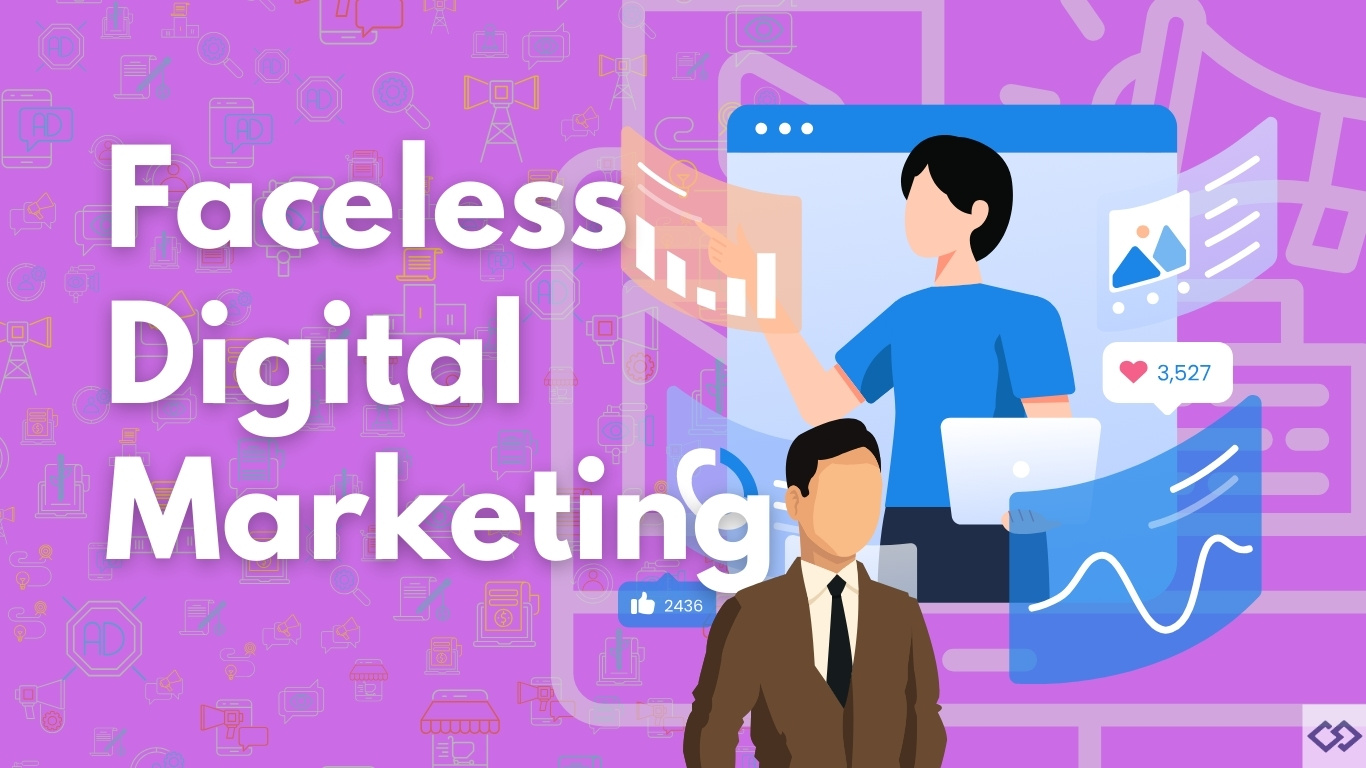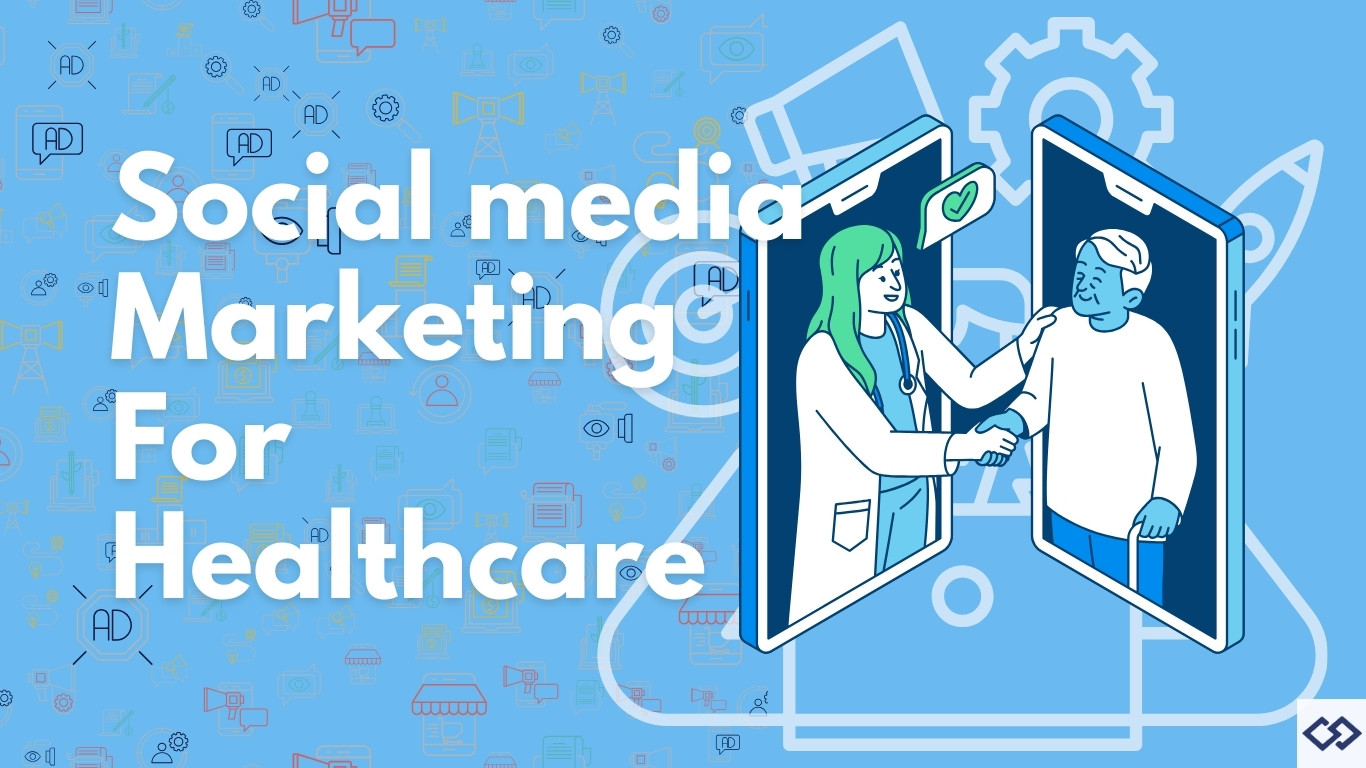
In a world where personal branding often takes center stage, you might be wondering—can a brand thrive without a face? The answer is a resounding yes. Welcome to the world of faceless digital marketing, where businesses build strong, impactful brands without relying on a personal figurehead. Whether you’re a startup, a small business owner, or a digital entrepreneur, embracing this unique approach can unlock new levels of engagement, privacy, and cost-effectiveness. Ready to dive into the secrets of faceless digital marketing? Let’s explore how you can create a powerful online presence—no face required!
Importance of Faceless Digital Marketing
Faceless digital marketing is becoming increasingly important in today’s digital landscape. For businesses looking to maintain privacy, build trust, and focus more on their product or brand rather than individual identity, this approach is ideal. It allows brands to engage with audiences authentically while keeping the personal details of the team or owners out of the spotlight. This approach can be incredibly beneficial in sectors where privacy is paramount or when the product itself needs to take center stage.
Here, we’ll emphasize why businesses need to understand the growing significance of faceless marketing. As more businesses embrace remote work and digital entrepreneurship, the need for a personal connection can be replaced by a more authentic, value-driven content strategy.
Incorporating this into your marketing efforts means understanding the difference between personal branding and product-focused branding, especially on platforms like social media or in digital marketing strategy. You’ll also need to align your digital marketing with privacy concerns and anonymous content creation.
Key Characteristics of Faceless Digital Marketing
Faceless digital marketing revolves around shifting the focus from personal identity to creating a strong, product-focused online presence. This approach allows brands to connect with their audience without needing a personal touch or visible individual representation. The key characteristics of faceless marketing are essential to understand for businesses looking to adopt this strategy.
Focus on Brand Identity
In faceless digital marketing, the brand itself becomes the central figure. Instead of highlighting a person or a personal story, the focus shifts to the brand’s core values, mission, and vision. This allows businesses to create a strong brand identity that resonates with their audience. Establishing a distinct and recognizable brand identity through high-quality content becomes crucial, as it helps build trust and authenticity without revealing personal details.
By emphasizing value-driven content and consistent messaging across channels, businesses can create a cohesive brand identity. This helps in building an authentic brand presence and establishes a loyal customer base even when the brand remains faceless.
Emphasis on Product Offerings
One of the defining traits of faceless digital marketing is the emphasis on showcasing the product or service itself, rather than the person behind it. Whether you’re running an affiliate marketing business, e-commerce, or promoting digital products, your product offerings should take the spotlight. The faceless approach allows you to promote the product benefits without needing personal involvement.
The key here is to create informative blog posts and social media content that focus on the features and advantages of the products. High-quality product descriptions, coupled with user-generated content, can drive Genuine Engagement and customer trust.
Benefits of Faceless Digital Marketing
Faceless digital marketing offers a variety of benefits for businesses, particularly when it comes to privacy, cost-efficiency, and engagement with the audience. Adopting this approach can transform the way brands interact with customers and grow their online presence.
Enhanced Privacy for Businesses
One of the primary advantages of faceless digital marketing is the enhanced privacy it provides. By choosing not to feature individuals, brands can maintain a secure and private online presence. This is especially important in industries where data privacy is a concern or for entrepreneurs who prefer not to be in the public eye.
For businesses utilizing affiliate marketing or faceless affiliate marketing, privacy is key. It allows them to focus on promoting digital products or services without revealing too much personal information about the company or its creators. As a result, businesses can maintain their privacy while still building strong relationships with their audience through genuine connections and high-value content.
Cost-Effectiveness
Faceless digital marketing is often more cost-effective compared to traditional methods. By not having to focus on personal branding or hiring influencers, businesses can invest more resources into content marketing and advertising campaigns. This allows for a higher return on investment (ROI) as the budget can be allocated toward creating high-quality content, social media posts, and digital tools that drive results.
Without the need for personal appearances or celebrity endorsements, businesses can focus on producing informative content that attracts and engages the target audience, all while keeping costs low and marketing efforts streamlined.
Increased Audience Engagement
Despite the absence of a personal connection, faceless digital marketing can still foster strong audience engagement. By providing value-driven content, such as educational content, brands can establish trust and foster a sense of community. Engagement can be driven by sharing user-generated content, promoting discussions, and responding to feedback, which helps build a loyal following.
The key to driving audience engagement lies in consistent content creation and understanding your target market. A consistent brand voice and high-quality content across social media platforms can lead to increased interaction, making faceless marketing a highly effective strategy for businesses looking to grow their audience.
trategies for Implementing Faceless Digital Marketing
Successfully implementing faceless digital marketing requires a well-thought-out approach that combines content creation, audience engagement, and leveraging digital tools. Below are some key strategies to help businesses thrive in a faceless marketing environment.
High-Quality Content Creation
Content is the backbone of any faceless digital marketing strategy. Without a visible face to connect with, your content needs to speak for itself. Focus on creating high-quality content that is informative, engaging, and valuable to your audience. This includes blog posts, videos, and social media posts that showcase the benefits and features of your products or services.
Content strategy should include consistent storytelling and value-driven content that aligns with your brand identity. Additionally, using visual elements like infographics, stock images, or video clips can make your content stand out, even if it’s faceless.
Utilizing Customer-Generated Material
One effective way to foster engagement and build trust in faceless marketing is by incorporating user-generated content (UGC). This could be reviews, testimonials, or customer-created posts that highlight their experiences with your product or service. By showcasing real people interacting with your brand, you create authentic connections without needing to show personal identities.
Encouraging user-generated content can also help amplify your brand’s reach. For example, by reposting content from your customers on platforms like Instagram or LinkedIn, you’re not only promoting your products but also building a sense of community and trust around your brand.
Building a Strong Online Presence
Building a robust online presence is crucial for faceless digital marketing. Without a visible personal brand, your business must focus on having a consistent and professional presence across social media platforms, websites, and other digital channels.
Regular posting, interaction with followers, and engagement with comments help you remain visible and create an ongoing relationship with your audience. Additionally, leveraging SEO strategies and social media engagement tools will ensure your content reaches a wider audience and is discoverable.
Understanding Target Audiences
Understanding your target audience is one of the most important aspects of any marketing strategy, and this holds true for faceless digital marketing. Without a personal touch or face-to-face interaction, it’s crucial to truly understand your audience’s needs, preferences, and behavior to craft content that resonates with them.
Researching Audience Behavior
In faceless digital marketing, one of the most effective ways to connect with your audience is by researching and analyzing audience behavior. This includes looking at their online habits, the type of content they consume, and how they interact with brands. Tools like Google Analytics, social media insights, and engagement rates can provide valuable data that help businesses fine-tune their approach.
By understanding how your audience behaves online, you can tailor your content, promotions, and digital product sales to better meet their needs. Whether it’s adjusting your content calendar or choosing specific digital marketing channels, having a clear picture of your audience’s preferences is key to success.
Segmenting Target Markets
Once you understand audience behavior, the next step is segmenting your target market. Not all customers are the same, and faceless marketing allows you to categorize your audience into specific groups based on demographics, interests, or behaviors. This segmentation helps you create more personalized and relevant content.
You can use these insights to target specific audience segments with tailored messaging, ensuring that your social media content and digital marketing campaigns resonate with each group. This also means you’ll be able to focus on delivering content that appeals to your audience’s pain points, interests, and buying behaviors.
Selecting Appropriate Platforms for Faceless Marketing
Choosing the right platforms is crucial in faceless digital marketing. Without a personal figure to create direct connections, leveraging the most effective platforms for your brand becomes even more essential. By selecting the right channels, you ensure that your faceless content reaches the right audience and performs optimally.
Social Media Engagement
Social media is one of the most effective tools in faceless digital marketing. Platforms like Instagram, LinkedIn, Facebook, and Twitter allow you to engage with your audience without the need for a personal face. By focusing on social media engagement—through comments, likes, shares, and DMs—you can build a community around your brand.
Even without personal involvement, your business can still create meaningful interactions by engaging with followers, reposting customer content, and maintaining a consistent brand voice across channels. Platforms like Instagram and Facebook also offer advertising opportunities that can increase visibility and attract new followers, making them ideal for faceless marketing strategies.
Content Distribution Channels
In addition to social media, choosing the right content distribution channels plays a key role in the success of your faceless digital marketing efforts. Whether it’s through email marketing, SEO, or affiliate marketing, understanding how to distribute your content efficiently helps ensure that it reaches your audience.
Using content marketing tools like SEO optimization for blog posts or sharing content across multiple platforms can help extend your brand’s reach. The goal is to deliver valuable content consistently and through the most effe
Crafting a Compelling Brand Voice
A strong, consistent brand voice is essential in faceless digital marketing. Since there is no personal identity to drive the brand, the voice becomes the most important tool for connecting with the audience and communicating the values, mission, and personality of the business.
Developing a Unique Tone
Even without a personal face behind the brand, it’s important to develop a unique tone that represents the business. This tone should reflect your brand’s core values, whether it’s professional, friendly, humorous, or educational. By maintaining this tone across all content—be it social media posts, blog articles, or email newsletters—you create a consistent and recognizable voice that resonates with your audience.
This unique tone should match your target audience’s preferences and expectations, making them feel understood and valued. For example, if you’re marketing a digital product aimed at young professionals, your tone might be casual and inspiring, while a more formal tone might be appropriate for B2B faceless marketing in industries like finance or law.
Consistency Across Channels
One of the key aspects of faceless digital marketing is the ability to maintain consistency across channels. Since you’re not relying on a personal figurehead, your brand voice needs to stay the same across all touchpoints—whether it’s Instagram Reels, Facebook posts, or email marketing campaigns.
This consistency not only helps reinforce your brand’s identity but also builds trust with your audience. If customers know what to expect from your messaging, they are more likely to engage with your content, share it, and return for more. It’s also crucial for SEO and content marketing efforts, as search engines tend to favor brands that have a cohesive and consistent online presence.
Navigating Data Privacy Concerns
As the digital landscape evolves, data privacy has become an increasingly important issue for businesses engaging in faceless digital marketing. Without a personal figurehead, the challenge of maintaining privacy and trust with your audience is even more significant. Ensuring that your business is transparent and compliant with data protection laws is essential for long-term success.
Data privacy concerns primarily revolve around how user data is collected, stored, and utilized. With faceless digital marketing, where there is often a stronger reliance on automated tools, digital tools, and online tracking, businesses must be cautious in handling this data. Ensuring compliance with regulations like the General Data Protection Regulation (GDPR) or the California Consumer Privacy Act (CCPA) can help avoid legal issues and foster trust.
It’s also vital to communicate openly with your audience about the data you collect and how it will be used. Transparency in your content strategy can help alleviate concerns, build credibility, and show your commitment to protecting their privacy.
Furthermore, you can implement privacy-focused practices such as using encrypted data storage, offering clear opt-in/opt-out options for newsletters or promotional emails, and limiting data collection to only what is necessary for your marketing campaigns.
Trends in Faceless Digital Marketing
Faceless digital marketing is continuously evolving, with new trends emerging as technology advances and consumer preferences shift. Staying updated on these trends helps businesses adjust their strategies, remain competitive, and meet the ever-changing expectations of their audience.
The Rise of Anonymity in Branding
One of the most notable trends in faceless digital marketing is the increasing rise of anonymity in branding. With concerns over privacy, more businesses are choosing to operate without a personal figurehead. Instead, they focus on their brand identity, values, and mission. The appeal lies in offering a more privacy-conscious approach to marketing, where the business prioritizes customers’ data protection and focuses on delivering high-quality, value-driven content without revealing personal identities.
This trend is also supported by the growing demand for transparency. Faceless brands are becoming more common in sectors like technology, e-commerce, and digital products, where customers value trust over personal connection. By embracing anonymity, businesses can focus more on product benefits and the quality of their offerings rather than relying on a charismatic personality to drive engagement.
Evolving Consumer Preferences
As consumers become more accustomed to digital interactions, their preferences continue to evolve. In the context of faceless marketing, evolving consumer preferences reflect a shift towards more authentic content that feels relatable without the need for a personal identity.
Consumers are gravitating towards brands that offer personalized advice, relevant content, and an emotional connection, all while maintaining a level of detachment from personal figures. This has made user-generated content, AI-powered content creation, and content strategy driven by audience insights increasingly important in faceless marketing campaigns. Businesses that can adapt to these evolving preferences, create valuable content, and engage their audience effectively without showing a personal face are likely to thrive.
Case Studies of Successful Faceless Campaigns
Learning from real-life examples of faceless digital marketing can provide invaluable insights into how businesses effectively implement this strategy. These case studies showcase different approaches and techniques used by brands to create impactful, engaging campaigns without relying on a personal figurehead.
One successful faceless campaign can be seen in e-commerce brands, particularly those offering digital products or services. Many online brands focus on their product offerings, showcasing their value, benefits, and quality without attaching a personal identity to the brand. For example, brands in the technology and digital entrepreneurship sectors often use faceless accounts to present their products with informative and value-driven content. This type of content is designed to engage the audience through high-quality content creation and compelling messaging, rather than relying on personal charm.
Another example is faceless marketing campaigns in the affiliate marketing space, where influencers or marketers promote products without revealing their personal identity. These campaigns often use user-generated content and social media engagement to build trust and authenticity. Brands in this sector leverage AI-powered content creation to ensure the messaging aligns with their target audience’s needs without involving individual personalities.
In both of these examples, the key to success lies in maintaining a consistent brand voice, creating high-quality, informative content, and engaging with the audience in meaningful ways. By focusing on these elements, these brands demonstrate that faceless digital marketing can be just as impactful, if not more so, than traditional, personality-driven marketing.
Future of Faceless Digital Marketing
The future of faceless digital marketing is bright and filled with potential. As more businesses embrace the power of automation, AI, and privacy-conscious strategies, the demand for faceless campaigns is likely to grow. Here’s a glimpse into what the future holds for faceless marketing:
With increasing concerns about data privacy and the desire for anonymous branding, the trend of faceless marketing is expected to continue gaining momentum. More companies will realize that focusing on brand identity and product offerings—without a personal figurehead—can be an effective way to engage audiences while maintaining privacy. Faceless marketers will continue to rely on innovative technologies like AI-powered content creation and automation tools to create personalized, relevant experiences for their audiences without needing to reveal their personal identity.
Furthermore, the future of faceless digital marketing will likely see the rise of even more user-generated content, community building, and social media engagement. As consumers demand more authentic connections and value-driven content, businesses will have to prioritize high-quality, personalized interactions. The need for privacy will also push companies to adopt stronger data protection measures, ensuring that their marketing campaigns are both effective and secure.
Ultimately, the future of faceless digital marketing will be shaped by advancements in technology, evolving consumer behaviors, and an increased focus on transparency and trust. As businesses continue to experiment with different strategies and tools, the possibilities for faceless marketing will expand, creating exciting opportunities for brands to thrive in this new era of digital marketing.




